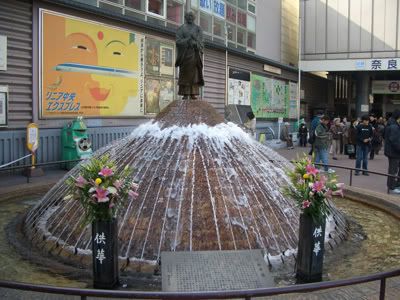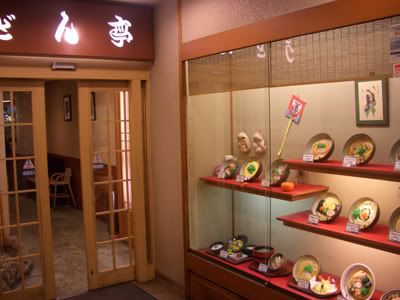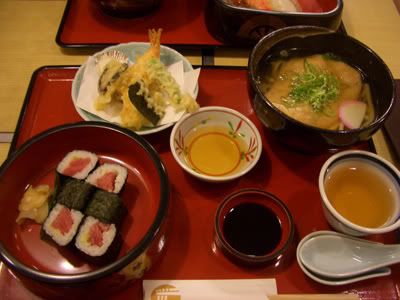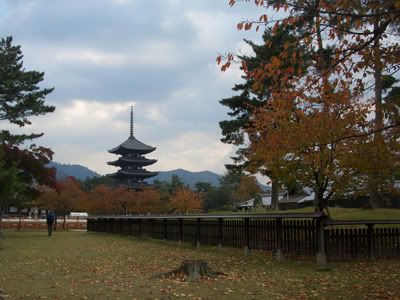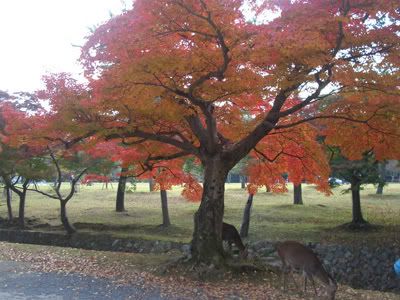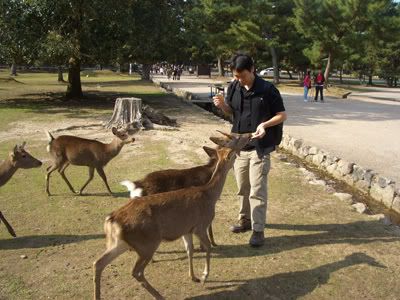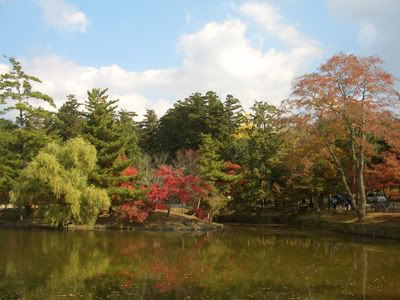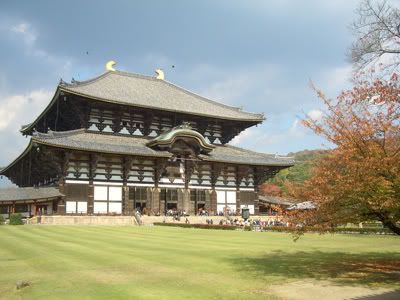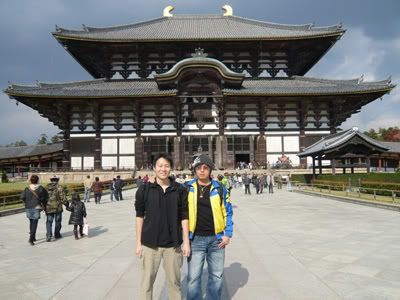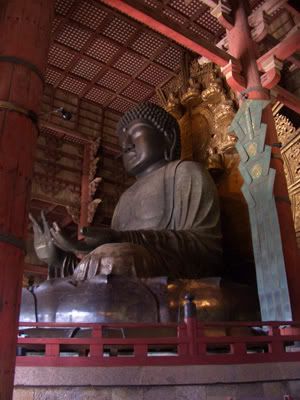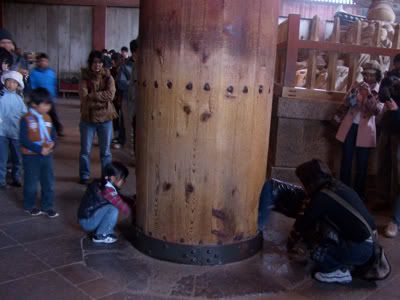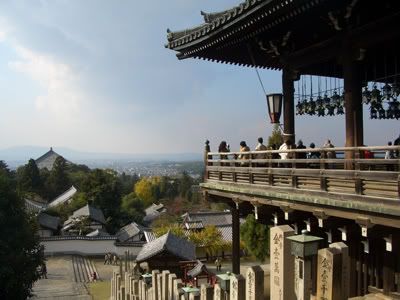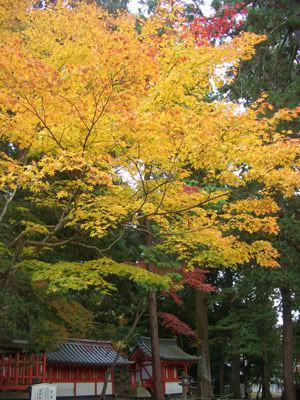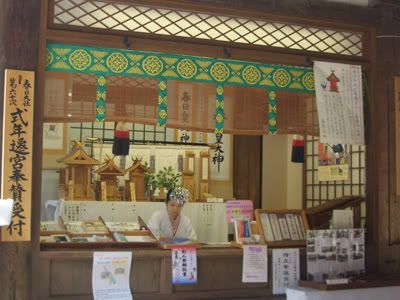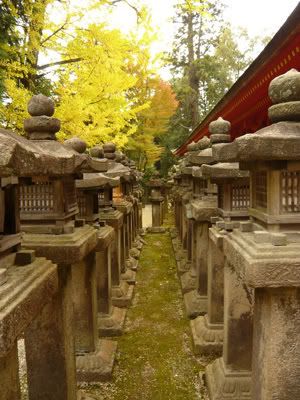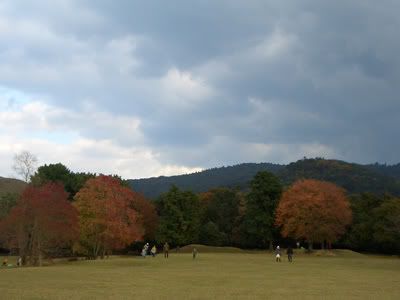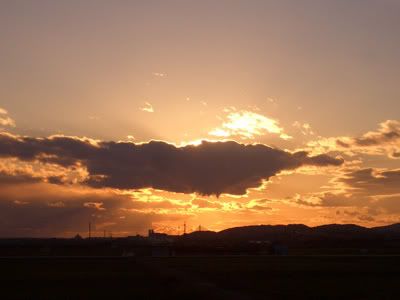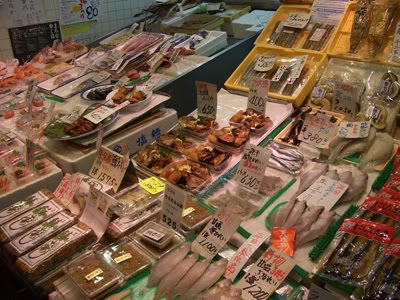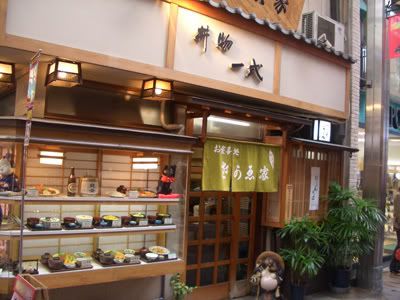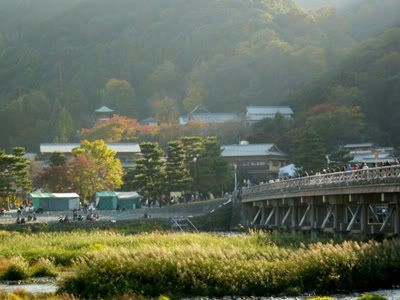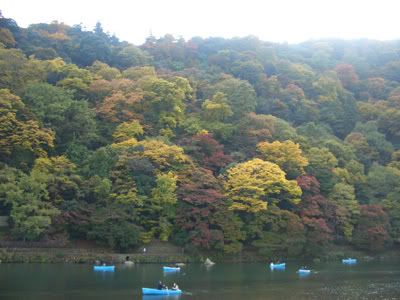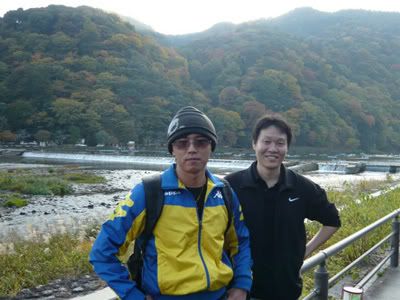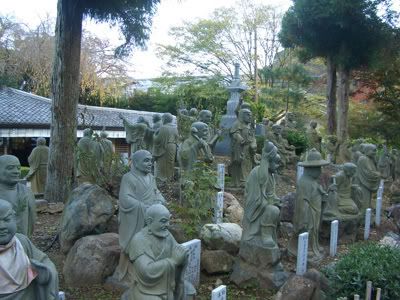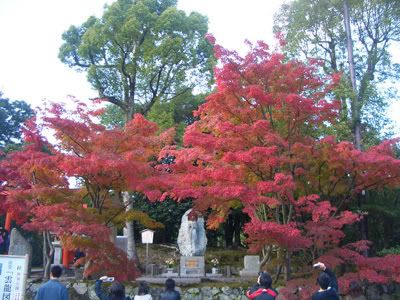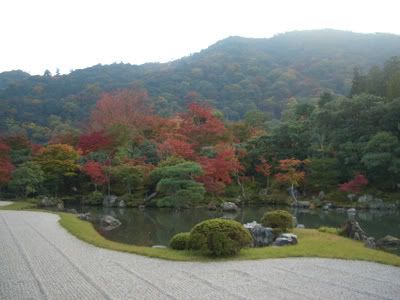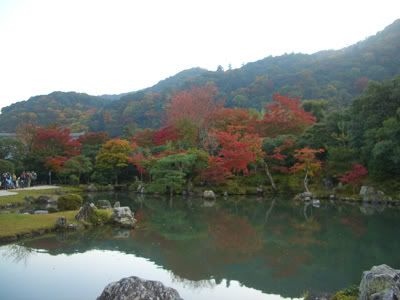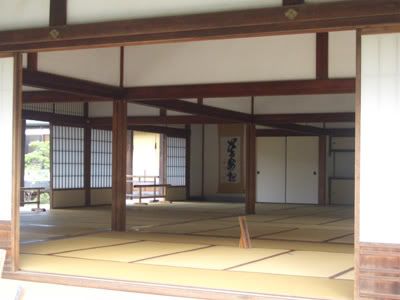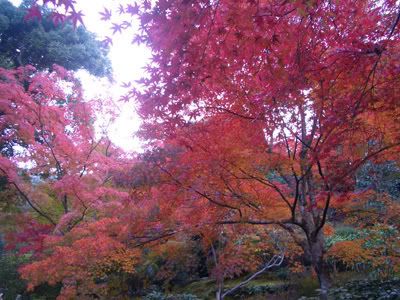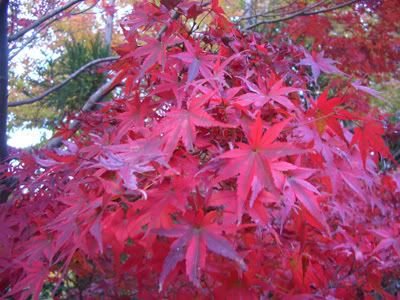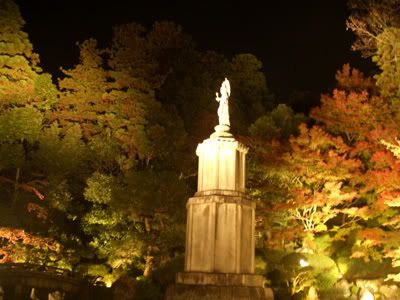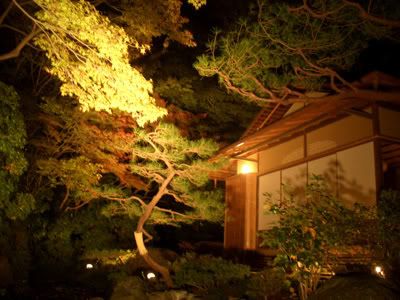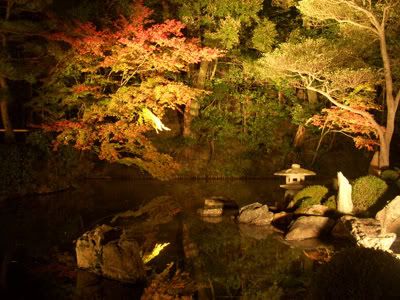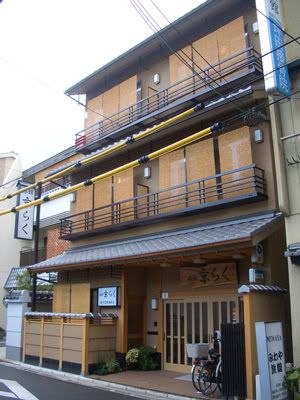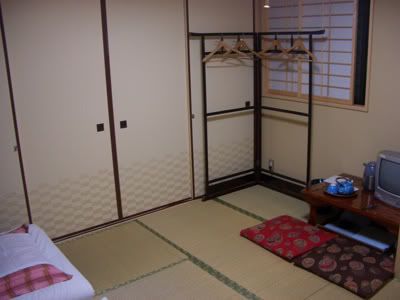The visit to Koyasan(高野山). It is one that has taken me weeks of planning, countless deliberations and a year and a half of patient waiting. This is a trip that cannot be undertaken over a short 2-days weekend or during the warmer season. The last time I attempted to visit it was during the 5-days Golden Week period in May 2006 but was unable to make the trip due to difficulties in reserving transportation and accommodations. This time round, the extended holidays came a bit late in end-November. My only concern is the approach of the cold winter season.
Coincidentally, the entire week before the extended weekend was extremely cold. A cold winter wind had swept through the whole of Japan, bringing the temperatures for Koyasan to -1 degrees celsius at its lowest and 4 degrees celsius at its highest. But based on my calculations, the day which I will be visiting Koya-san will see its weather go back to normal. It is true indeed, during the day the average temperature is 9 degrees celsius and at night it hovers around 4 degrees celsius.
Getting there
I visited Osaka Namba station the day before to get a clear orientation of the place. They have a 2-day Koya Free pass which cost 2,780Yen. It entitles me to a return train ticket between Namba and Koyasan as well as free bus rides in town. I bought it the next day from the station office just before departure.
On the day of departure, I woke up at 5.50am and departed from my hotel at 6.25am. The walk to Namba is only 10 minutes. After a quick breakfast at Namba, I'm on the 6.59am Limited Express train to Hashimoto station(橋本駅). The first leg of the journey takes 50 mins. There is no direct train from Namba to Koyasan and all visitors have to transit onto the special Koyasan mountain train at Hashimoto station. It is a small 2 carriage train that is more suitable for the uphill mountain climb. The final station is Gokurakubashi(極楽橋). The second part of the journey takes 45 mins. From here is a 5 mins cable ride up to the top and a 10 minutes bus ride straight to the city centre. Total journey time is 2 hours 30 mins.
But getting there is the real fun. Especially from the second part of the journey. Where the mountain train will slowly make its way up to the top. The cable car route is almost vertical before reaching the bus terminal. While transiting at Hashimoto station, I made an acquaintance with a fellow traveller from Australia. We chat up along the way and found that we are on the common route to Koyasan.
Here is a photoshot from the mountain train up.
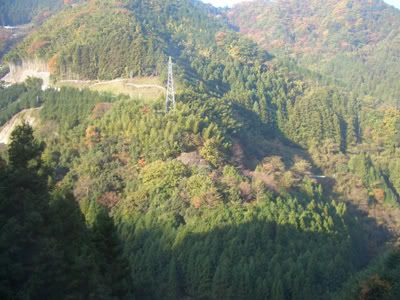
At the Tourist Centre
After we have arrived at the town centre at the Senjuin-bashi bus stop, we made our way to the Tourist Information Centre. One of the highlight in Koyasan is the Shukubo(宿坊), an overnight stay at one of the many temple lodgings available. It doesn't come cheap, with prices ranging from 9,500Yen to 15,000Yen. We both haven't made our accommodations before hand and this trip is a hit and run attempt. My australian mate, Robert suggested to go for the 9,500Yen one. And I recommended a good English-speaking Shukubo call Rengejo-in(蓮華定院). Shukubo arrangements can be made via the Tourist Information Centre. The staff was friendly and spoke a little English. But I was mostly conversing with her via Japanese and doing some translation along the way.
We were getting a bit worried of not getting accommodations due to this 3-days holiday. After a 20 minutes wait, she managed to secure 2 single rooms for me and Robert in Rengejoin. I'm staying only for a night while Robert is going for 3 nights. Breakfast and Dinner are included and payment have to be made upfront at the Tourist Centre. Alright!!
While waiting at the Tourist Centre, I came to notice that they have an audio guide for rental which costs only 500Yen a day. I can return it before 12noon the next day but I prefer to return it before 4.30pm on the same day. I highly recommend the guide for foreign visitors as it has 105 guided items in it for sights all over koya-san. It will make the tour more meaningful.
Shukubo at Rengejo-in
We went to our accommodations first to place our bags. Rengejo-in is only a 10 mins walk from the Tourist Centre. This is the first time I'm travelling without a bag in Japan. And it feels really great! The weather is also perfect!
Here is a photoshot of the Rengejo-in. The hall shown below is where we have our evening service of meditation and talks, and also our morning service of listening to the Japanese monks harmonious chant and talks. You will notice the sanskirt garden just in front of it with some design on it. It is the sanskirt word for 'Ah'.
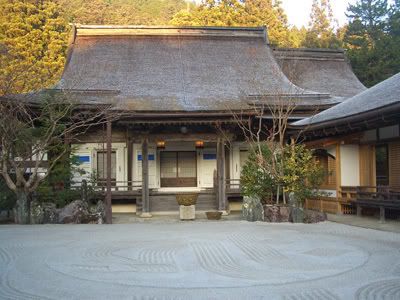
I saw Robert taking photos of this scene using his powerful camera. So I joined in too and took it using my digital camera. It looks really cool. Based on my photography style, I wouldn't have notice this neat arrangement and its a unique photoshot (something that you only see in magazines).
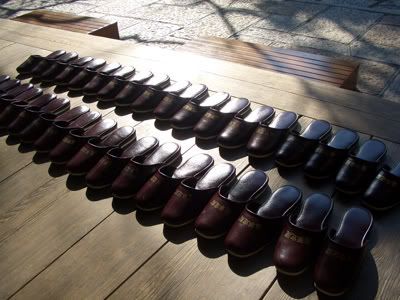
Here is me with Robert.

Walking around
It feels really great without the bag and the weather is equally pleasant. I was almost jumping around after I have left Rengejo-in. The time I began my tour is 10am. I went to all the sights recommended by the audio guide, starting with Nyonindo(女人堂) to the north. On the way to the Tokugawa Mausoleum, I caught this beautiful scene by the road.
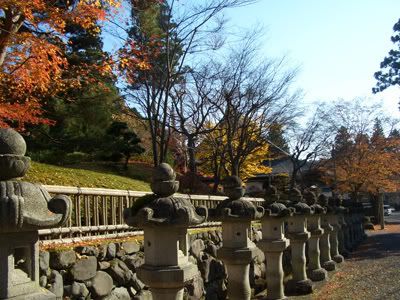
I pop into some of the temples which I find interesting and took a few photos here and there, while savoring the picturesque scene at the same time.
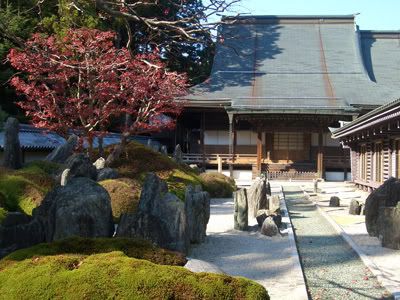
Kongobuji
At the entrance to the Tokugawa Mausoleum, I bought the combined ticket which costs 1,500Yen. It offers free entry into 5 sights (+1 precepts taking ceremony). I spent a few minutes walking around the Mausoleum park, before moving on to the next main attraction, the Kongobuji(金剛峯寺). The Kongobuji is the headquarters of the Shingon school of Buddhism. The audio guide provides good descriptions of each rooms in the temple. The first room has a large cross-section of a tree cut down centuries back to prevent it from collapsing. There are several rooms with fine paintings. Without the audio guide, I wouldn't have known about the significance of each paintings. The best painting I have seen is the one where Kukai is departing from Chang-an and there is a large crowd bidding farewell to them.
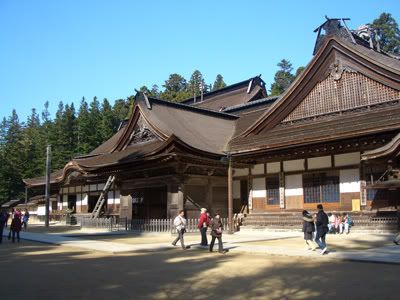
Within Kongobuji is a large stone garden. These stone gardens look really similar to Zen gardens. But they are actually a common feature in all Japanese temples. There is a training hall next to the garden but it is off-limits to visitors.
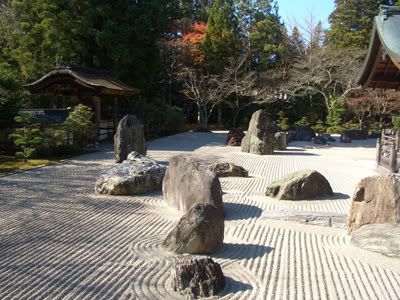
A new hall has been constructed around ten years back which serve as the teaching hall for the public. I had a simple tea ceremony there. I'm not really sure how much it is but it came free as the Koya Free pass I bought from the train station has a coupon that entitles me to it. It has rice biscuit and a green tea.
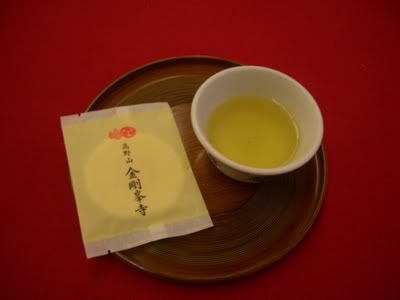
I left Kongobuji around 11.15am and walked to the next sight - Daishi Kyokai(大師教会), which is only 3 minutes away. Before the Daishi Kyokai, I chance upon a beautiful passageway with red autumn leaves. There are many people taking photos of it, so I just join in.
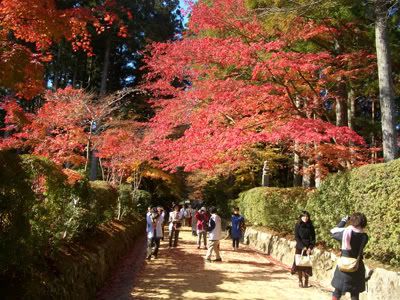
Daishi Kyokai
Here is the garden to the Daishi Kyokai. The main hall is a functioning hall at the moment. It is here where the refuge taking and precepts ceremony are held. The garden in front of the hall looks amazing.
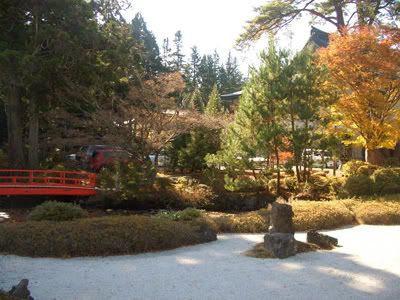
Reihokan Hall
Past the Daishi Kyokai, I'm on my way to the Reihokan Hall(山霊宝館). It is actually a museum with lots of old paintings and statues. This visit is also included in the combined pass so I just went in for it. There are only a few rooms in it. Some of the larger size statues look menacing.
The Garan
Directly opposite the museum is The Garan(伽藍). It is actually a large temple compound with many halls and buildings in it. I went in from the southeast entrance and this mega-pagoda stood right in the middle of the compound. The pagoda is actually part of the Combined Ticket too. In the pagoda are 5 Buddha statues representing the Buddhas of the 5 directions. It is not arranged in a horizontal manner as with most temples but 2 at the back, 2 at the front and 1 in the middle. This arrangement is said to give the practitioner a 3-dimensional view of the mandala world.
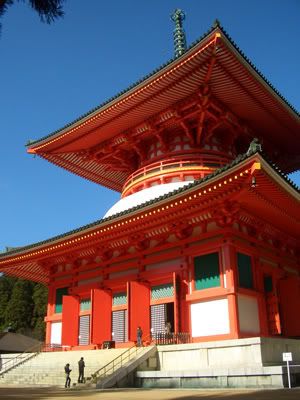
While walking around the compound, I heard a large company of monks chanting in front of the main temple hall and I walked rapidly towards them. It appears they are reciting some sutras or mantras towards every building. Not sure whether it is done daily, but when I saw them doing the recitation, it is 12.30pm in the afternoon. I really like the Japanese chanting, so I capture a short video clip of it and share it with the rest.
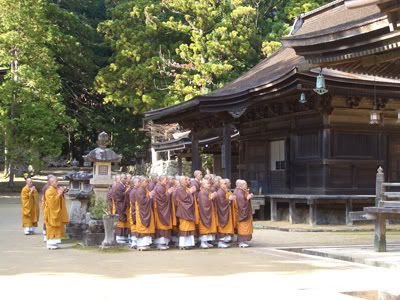
Here is the main temple hall and within it are the Buddhas and Bodhisattvas representation. In front of the images are two large mandala surrounded by offerings similar to that of Tibetan Buddhism.
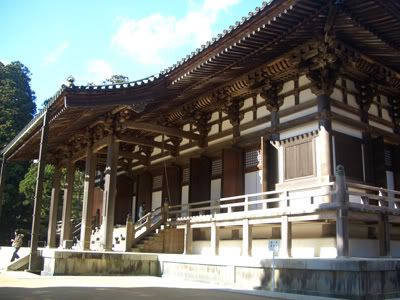
Just before I left the temple at 1pm, a monk arrived to ring the temple bell. This is the first time I have actually heard a temple bell ring right in front of me. Most of the other temples I have visited only have an ancient bell as exhibit but it never rang. This is quite a large bell. I have also captured a video of the monk ringing the bell. It also requires some skill to swing the wood towards the bell (momentum is important).
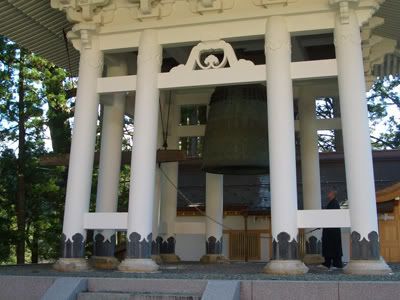
Okuno-in
I made a quick walk eastward towards the next main sight for the day - Okuno-in(奥之院). Okunoin is actually a cemetary and is one of the main highlights of Koyasan. This is considered to be the largest cemetary in Japan and the most popular. The audio guide gives an extensive description to some of the major tombs in there. For those who know Japanese history, some of the main warlords during the warring era are buried here. They include Takeda Shingen, Uesugi Kenshin, Date Masamune, Akechi Mitsuhide and Oda Nobunaga. The funny thing is some of the warlords are bitter enemies when they are alive but they are buried next to one another (or just opposite each other) after they have passed away. There are 3 bridges in Okunoin. The first one marks the entrance to Okunoin from Koyasan town, the second is considered to be crossing over to the netherworld and the third is the entry to the holy of the holiest area of Okunoin.

Before the last bridge is a number of Jizo representations with people splashing water.

Here is the small stream that demarcates the holy of the holiest area - the Kobo Daishi(弘法大師) shrine. As no photos are allowed beyond the bridge, I will roughly describe what is there. Past the bridge to the left is Senryo(仙陵), the tombs of the immortals. The emperors of the Edo period are buried here. In the centre we have Torodo(籠堂), the Hall of Lamps. It is a dark hall which is illuminated by the hundreds of lamps in there. It is said that 2 of the lamps have been burning for hundreds of years. At the back of the hall is Kobo Daishi's shrine. Kobo Daishi (Kukai - 空海) is really a great accomplished master in Japan. Before he left Japan for China, he has already achieved a certain degree of realization. He left Japan with the imperial missions and received the esoteric lineage from China. Once he is back to Japan after 2 years in China, Koyasan became his training ground and his centre of propagation. Towards his later years, Kobo Daishi predicted his passing to his disciples. It is said that Kobo Daishi is still in deep meditation, awaiting the arrival of Maitreya Buddha. That is why many Japanese want their tombs to be situated around Kobo Daishi.
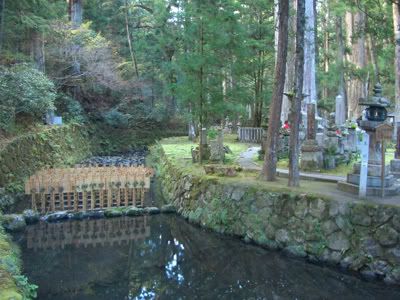
Sunset at the Daimon
I left Okunoin at 3pm. After a quick tea break (lunch), I walked back to the town centre to return the audio guide. According to the guide, the Daimon(大門) is one of top 100 sunsets place in Japan. So I made my way there as soon as possible. I arrived at Daimon at 4.15pm but the sun is still around the upper reaches of the horizon. Here is the massive structure of the Daimon. Visitors coming in from one of the mountain roads will be greeted by this scene when they reached the top.
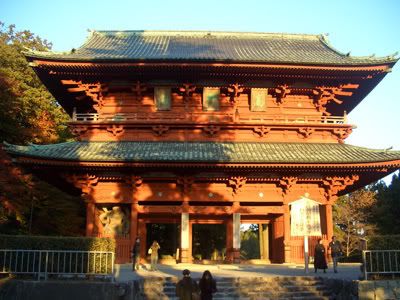
Just next to the Daimon is a shrine and many multi-colored autumn leaves which is lighted up by the setting sun.
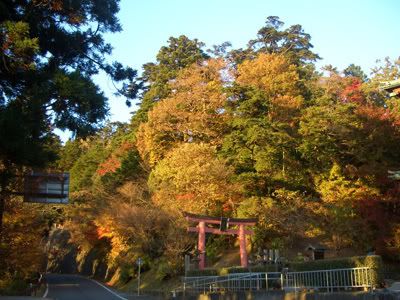
This photo-shot is taken at 4.45pm where the sun is slowly setting. It is really awesome. I stood there observing the sun setting on the horizon until it gradually disappears into the clouds.
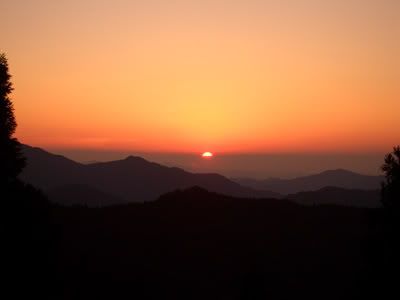
Back to Shukubo
After the sun has vanished behind the clouds, I rapidly made my way back to my Shukubo. It is a 20 minutes fast walk away. I arrived back at 5.15pm and quickly check in. They are starting their evening service soon at 5.30pm. I placed by bag pack in my room and joined them for their evening service. The abbot speaks to us in a mix of Japanese and English. There are 6 foreign visitors out of the 30 or so staying overnight. We were instructed on breathe meditation in English while the Japanese were instructed on the 'Ah' meditation. Well, this is the longest meditation session I have sat for a few months, 30 minutes in all. At the end of the meditation, he shared with us on the history of koyasan and on some of the Buddhist practices.
At 6.10pm, it is dinner time. We were served Shojin Ryori(精進料理). This is a really premium top notch meal. Something that you only see on TV. It is said all the 5 flavors and 5 colors can be found in Shojin Ryori. It is totally vegetarian and it taste good. They are made from tofu using some special technique.
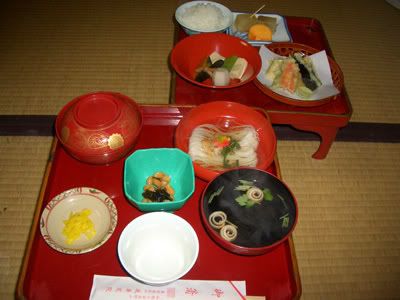
After dinner, it is bath time and here is a photoshot of my room. It feels really nice and warm in there. At night the temperature dropped to 4 degrees celsius. The blanket has some chinese words written on it. Let me share with you at the next picture.

For those who recognised it, it is the Heart Sutra!! Ok, I'm sleeping beneath it, so I think it is not too bad. The bath have Ofuro(Japanese steam bath) in it, so I just sat there and chat up with my australian friend. After bath, I began tidying up my stuff and planning the journey back the next day. By 9.15pm, I'm totally exhausted and it is lights out at 9.30pm. I gonna wake up at 5.30am the next day for the 6am morning service.

We were recommended to sit in the Zazen posture during the morning service. This posture requires both our legs to be tuck in behind and we are to be in this posture for 30 minutes. The monks began their morning service with chanting and occasionally jazzed up by the buddhist musical instruments. We all just sat there, listening to their melodious chant in the morning. Their chanting really reverberated with the spiritual self within me. It is very touching. After the morning practices, the abbot share with us on the sights around Koyasan and the history behind it in English and Japanese.
The morning service ended at 6.45am and we were told that breakfast will be served at 7am. Here is the garden just next to our rooms.
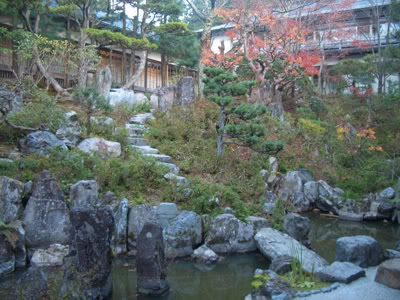
Here is breakfast. The miso soup and tea has not been filled up yet when I took this photo. The breakfast is pretty light as compared to dinner; which thankfully is a blessing as I gonna finish my breakfast in 5 mins.
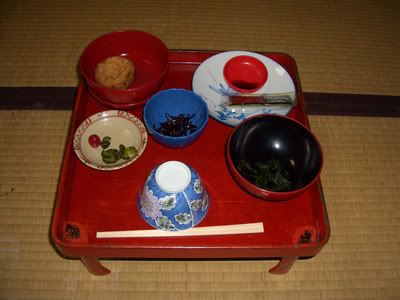
Farewell
I left the Shukubo at 7.08am to catch the 7.10am bus back to the cable station and it is a double train ride back to Osaka Namba station.

Now that I am back to Nagoya, I still frequently think of this trip to Koyasan. It is one of the highly recommended trip by the Lonely Planet editor and by several tourist information sites. I find Koyasan to be very beautiful and Buddhism is still very much alive there. There are monks going around; they still conduct retreats and teachings for the people. Kobo Dashi is a highly accomplished master and he is considered to be the founder of Shingon Buddhism (somewhat held in similar respect to Padmasambhva of Nyingma Lineage and Lama Tsong Khapa of Gelugpa Lineage). The teachings have been preserved and handed down to this day.
As my australian mate share on with us on his email on his recent trip to Koyasan "...and continue by telling you that it was one of the most beautiful places I have had the pleasure to visit during my travels. I shall tell you will have to wait to see photos to get a better idea of what I am trying to describe when words can't really do it justice..."
